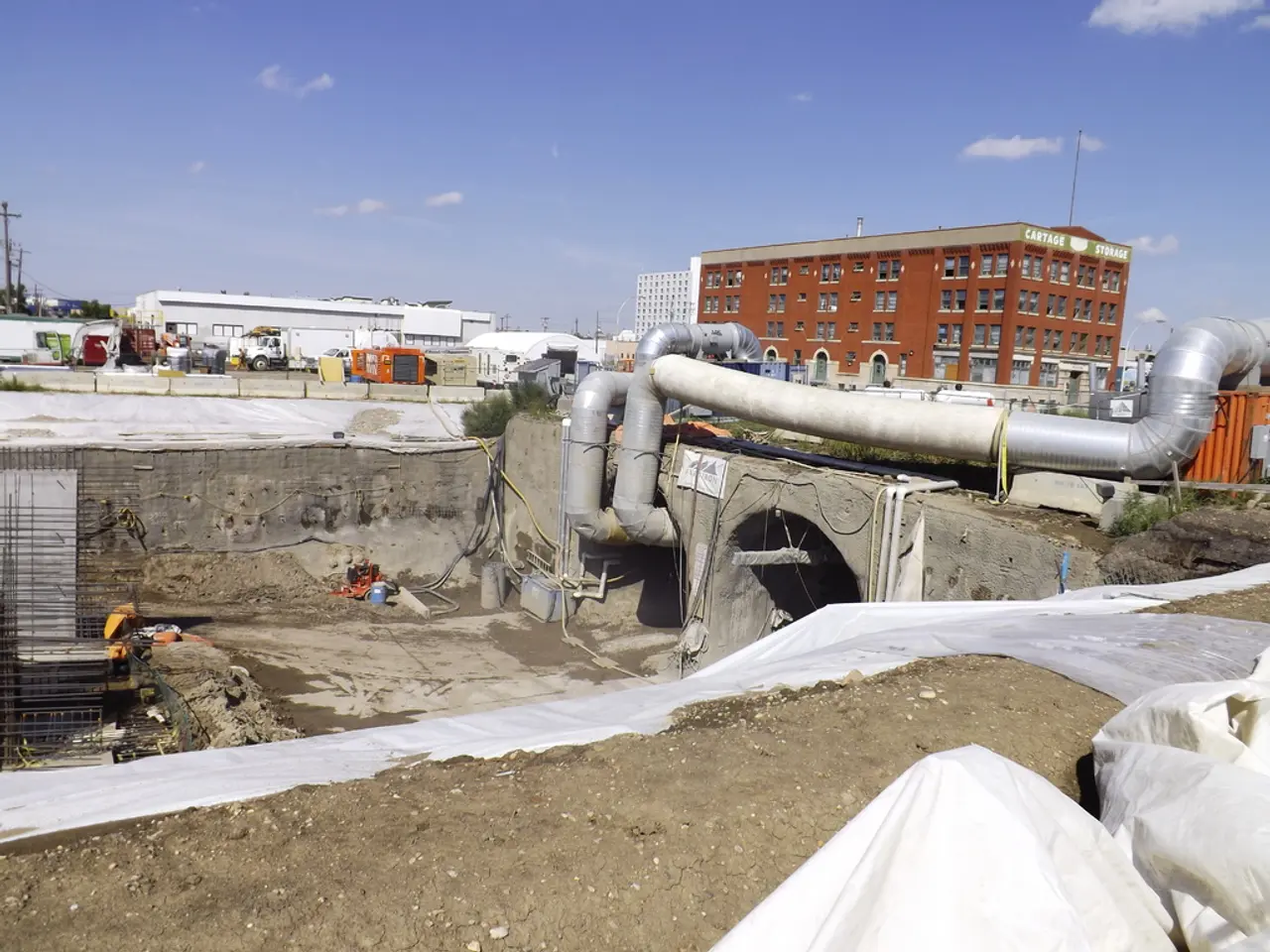Trump-directed reductions at NOAA criticized by an ocean researcher from California
In a move that has raised concerns among experts and politicians alike, the National Oceanic and Atmospheric Administration (NOAA) is currently grappling with significant staff reductions and ongoing vacancies. According to recent reports, NOAA has lost approximately 1,875 employees and has around 3,000 vacancies, with many critical roles such as meteorologists affected by a governmentwide hiring freeze that extends until at least mid-October 2025.
The leadership nominee for NOAA has pledged efforts to reverse these cuts and fully restaff the National Weather Service (NWS), emphasizing the importance of accurate forecasts to protect lives and property. However, restaffing is expected to be a slow process despite some positions recently being exempted from hiring freezes and expedited hiring authorities being authorized. Bipartisan support for these efforts exists among some senators who seek to speed up recruitment.
The reductions and vacancies have raised concerns about NOAA's ability to provide timely and accurate warnings, especially after extreme weather events like the catastrophic Texas floods. Senate Minority Leader Chuck Schumer has even called for an investigation into how staffing cuts affected NOAA's crisis response capabilities during those floods.
The impact of these staff cuts on NOAA's operations and systems is significant. The workforce reductions and budget cuts affect NOAA’s core missions, including hurricane and climate change monitoring. The Trump administration’s 2026 budget proposal includes $8 billion in cuts for future NOAA satellites, which are critical for gathering climate and weather data. Moreover, the proposal aims to dissolve NOAA's Office of Oceanic and Atmospheric Research, the primary federal body for climate research, which would likely diminish NOAA’s scientific capabilities for climate change study and forecast improvements.
Critics, including members of Congress, express strong concern that these cuts undermine NOAA’s scientific mission and weaken the infrastructure for forecasting extreme weather events. While the National Weather Service's direct budget saw a modest increase in the proposal, the overall reduction in R&D and satellite programs poses risks to long-term forecasting accuracy and climate monitoring.
As NOAA navigates these challenges, the importance of having communicators and local alert systems, in addition to meteorologists, for accurate weather forecasting and emergency responses is emphasized. The uncertainty about whether NOAA will be able to use Saildrones for hurricane monitoring or send out barges for ecosystem observation due to staff cuts further highlights the need for a fully staffed and well-resourced NOAA.
In the meantime, readers are encouraged to share their favorite California beaches by emailing their responses to a specified website. Two readers, Laurie Taylor and Barb Smith, have already shared their preferences for Carlsbad State Beach's Southside and Thousand Steps in Laguna Beach, respectively.
[1] NOAA Faces Staffing Cuts and Budget Cuts, Affecting Weather and Climate Monitoring. (2021). Retrieved from https://www.nytimes.com/2021/06/29/climate/noaa-staffing-cuts.html [2] Trump Administration Proposes $8 Billion in Cuts for Future NOAA Satellites. (2020). Retrieved from https://www.nytimes.com/2020/02/10/climate/noaa-satellites-cuts.html [3] NOAA's Office of Oceanic and Atmospheric Research Could Be Eliminated in Trump's Budget. (2019). Retrieved from https://www.nytimes.com/2019/03/11/climate/noaa-office-oceanic-atmospheric-research-budget.html [4] NOAA Staff Reduction Plan Hinders Operational Capacity. (2021). Retrieved from https://www.scientificamerican.com/article/noaa-staff-reduction-plan-hinders-operational-capacity/ [5] NOAA Faces Uncertain Future Under Trump Administration. (2017). Retrieved from https://www.nytimes.com/2017/03/16/climate/noaa-faces-uncertain-future-under-trump-administration.html
- The National Oceanic and Atmospheric Administration (NOAA) is grappling with significant staff reductions and ongoing vacancies, raising concerns among experts and politicians.
- The leadership nominee for NOAA has pledged to reverse these cuts and fully restaff the National Weather Service (NWS), acknowledging the importance of accurate forecasts.
- However, restaffing is expected to be a slow process, despite some positions being exempted from hiring freezes and expedited hiring authorities being authorized.
- Senate Minority Leader Chuck Schumer has called for an investigation into how staffing cuts affected NOAA's crisis response capabilities during the catastrophic Texas floods.
- The impact of these staff cuts on NOAA's operations and systems is significant, with the agency's core missions, including hurricane and climate change monitoring, affected.
- Critics, including members of Congress, express strong concern that these cuts undermine NOAA’s scientific mission and weaken the infrastructure for forecasting extreme weather events.
- The Trump administration’s 2026 budget proposal includes $8 billion in cuts for future NOAA satellites, which are critical for gathering climate and weather data.
- Readers are encouraged to share their favorite California beaches, emphasizing the importance of accurate weather forecasting and emergency responses amidst these NOAA challenges.








